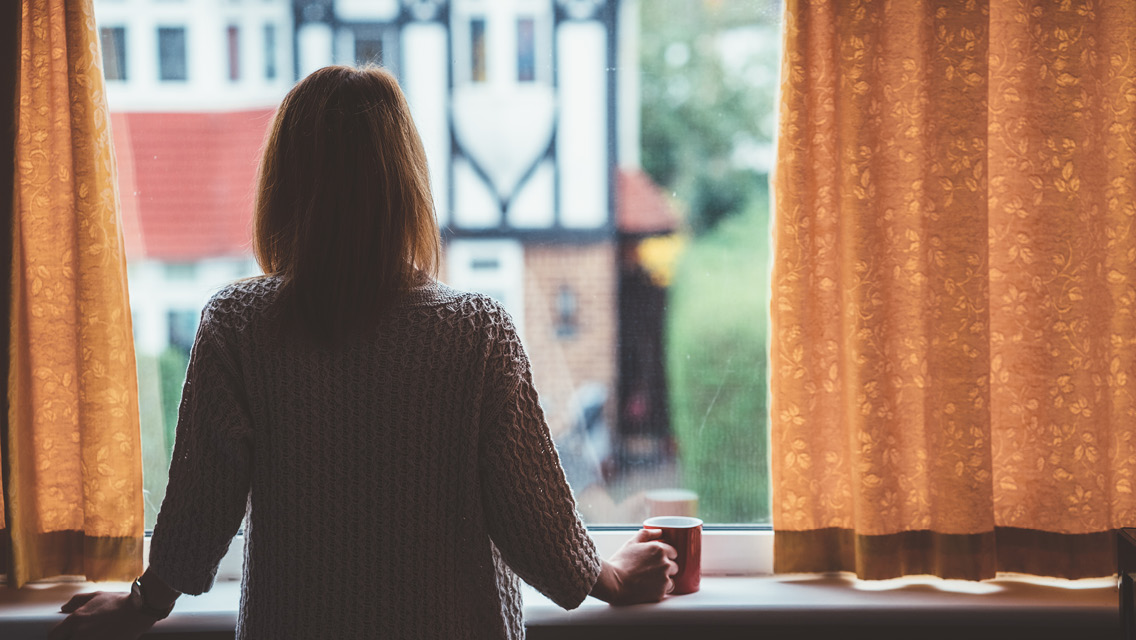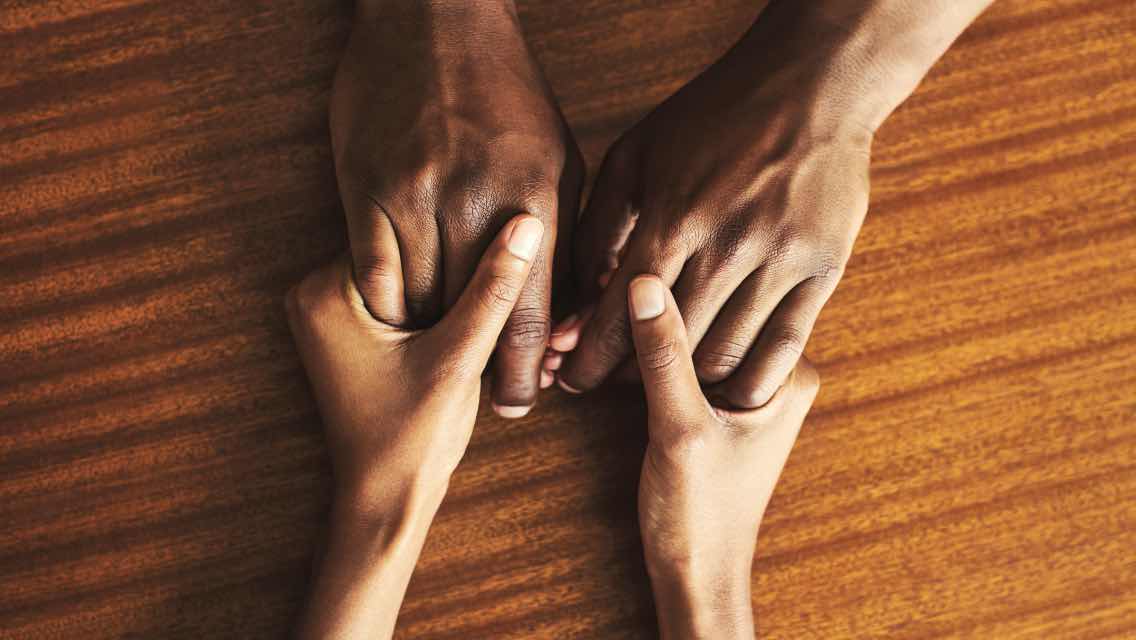The mass shootings and bombings that have ruled recent headlines are enough to leave anyone feeling unsettled — and even like potential targets. Although we may understand that our chances of being the victim of a terrorist attack are far less than being in a car accident, the constant media coverage of violent events can make it seem dangerous to be anywhere near a crowd. And, given the random nature of public violence, who can be faulted for cocooning at home instead of joining with communities in parks, concerts, and street life?
But our isolation comes at a cost. The fear of spending time in public robs us of the chance to really live the life we’re so afraid of losing. Psychotherapist Richard Schaub, PhD, offers counsel for transforming these fears so we can enjoy connecting with our communities again.
Expert Source: Richard Schaub, PhD, psychotherapist and author of The End of Fear: A Spiritual Path for Realists.
Challenges to Overcome
Feeling out of control. In the United States, the odds are stacked against experiencing any kind of mass attack. Still, our fear of such incidents can be far more powerful than our worries about being in an auto accident — even though the latter is much more likely. When we’re behind the wheel, we feel that we have at least a modicum of control over situations that may arise, Schaub explains. “But I don’t have control over someone who’s got a gun.”
The internal alarm system. Schaub points out that the human brain and nervous system are always “scanning for threats.” When the brain’s fear center receives an alarm message, perhaps in response to the sight of someone who looks frightening, “we don’t even get to decide whether the anxiety we feel in response is rational or irrational,” he says. “It is already in action in our body before we even know it’s happening.”
A powerful imagination. The elaboration will often take a negative, frightening form, forecasting the worst possible outcome. “Our brains can take that fear signal and then create something unreal around it, elaborate on it,” he says. Some mental health professionals call this “catastrophizing.”
Fear-provoking entertainment. Schaub says the entertainment business can be an “industry of fear.” If we regularly watch television and movies, the frequent exposure to violent images can keep the threat of public violence at the top of our minds, breeding a familiarity that makes such attacks feel more common than they really are.
Relentless news. Similarly, the combined effects of a 24-hour news cycle and regular exposure to social media (with its highly subjective, emotional comment streams) constantly steep us in images of violent incidents and the incessant public reactions that follow. This psychic immersion in threat and reactivity can keep our nervous systems on high alert.
Fear of fear itself. The fear response is an unavoidable part of life, but Schaub notes that our aversion to feeling fear (or any other difficult emotion) can actually increase our anxiety. Simply feeling your fear and then making a conscious effort to counteract it can be much less upsetting.
Projecting our fears. When we’re unwilling to consciously face our fears, we may project them onto an “other.” “We displace all of our fears about everything onto this ‘other,’ and then if we can do something to the other, we think we can be safe,” he explains. But this projection compounds the problem by creating more friction and distrust between social groups, and it can actually heighten our individual fear. Suddenly everybody who looks like one of those “others” becomes frightening.
Strategies for Success
Realize that fear isn’t going away. “Fear happens all the time,” Schaub notes. “It’s natural and normal. The fear circuitry in the brain is all hardwired to help us survive.” Meanwhile, not everything we fear is a real threat. Fear is the response to a stimulus; the rational evaluation of that stimulus happens elsewhere in the brain.
Reframe fear. “It may sound odd, but fear is also a form of love,” he insists. “It’s a love of life, a love of being here, that’s an integral part of us. It’s a way our body has of saying ‘I want to be able to stay here.’” (For more on this, see “The End of Fear.”)
Respond, rather than react. Although the fear response is normal, Schaub says, indulging it and elaborating on it will keep us stuck. “When you spot a worry, or a warning, or an anxious feeling, it can build momentum unless you respond to it,” he says. Simply labeling the fear can create enough mental distance to prevent a full-blown reaction.
Use self-talk. When you want to calm a fear reaction, he suggests thinking of it as a frightened child and speaking to that frightened child in your mind to reassure it. Realize that your fear itself has no answer — it is part of your nature that has to respond to the fear.
Use a deeper calming practice. Schaub recommends meditation, exercise, yoga, or a similar regular practice of stress reduction to support self-talk. If you practice a religion or a spiritual discipline, he says, this can be a ready framework of support.
Embrace vulnerability and connection. The truth is, life is inherently risky, and we are all vulnerable to injury and death. “There’s no one who’s not,” he says. “There are no exemptions, no free passes. If you just hold that in mind, it can actually change your emotion from fear to connection with others.” And that sense of connection can hold you when you go out into the world to be with your fellow humans, despite the headlines.
Resources
The End of Fear: A Spiritual Path for Realists by Richard Schaub, PhD, and Bonney Gulino Schaub, MS, RN (Hay House)
Our expert’s book, coauthored with his wife. A guide to accepting the fact that fear is part of the human condition, and that our fears remind us how deeply we love and value our lives.
“Fighting the Fear after the Terrorist Attacks” by Joanne Richard (Toronto Sun)
A set of practical, mainly fact-based tips for reducing terrorism fears, along with some expert advice from a handful of psychologists.
“How to Think About Terrorism” by Robert L. Leahy, PhD (Psychology Today)
A psychologist explains that we tend to overestimate the risk of becoming terror victims because the very characteristics of terrorism — its maliciousness and unpredictability — make it seem more likely to occur than it really is.
“The Science Behind Why People Fear Refugees After Terrorist Attacks — And What to Do About It” by Brian Resnick (Vox)
Given today’s overheated political rhetoric, the fear of terror attacks may spill over into anxiety about the presence of Mideast refugees in our midst. Resnick explores how our sense of distance from “others” can be reduced, helping us calm down.
This article appeared in the September 2016 issue as “Fear of Going Out.”




This Post Has 0 Comments